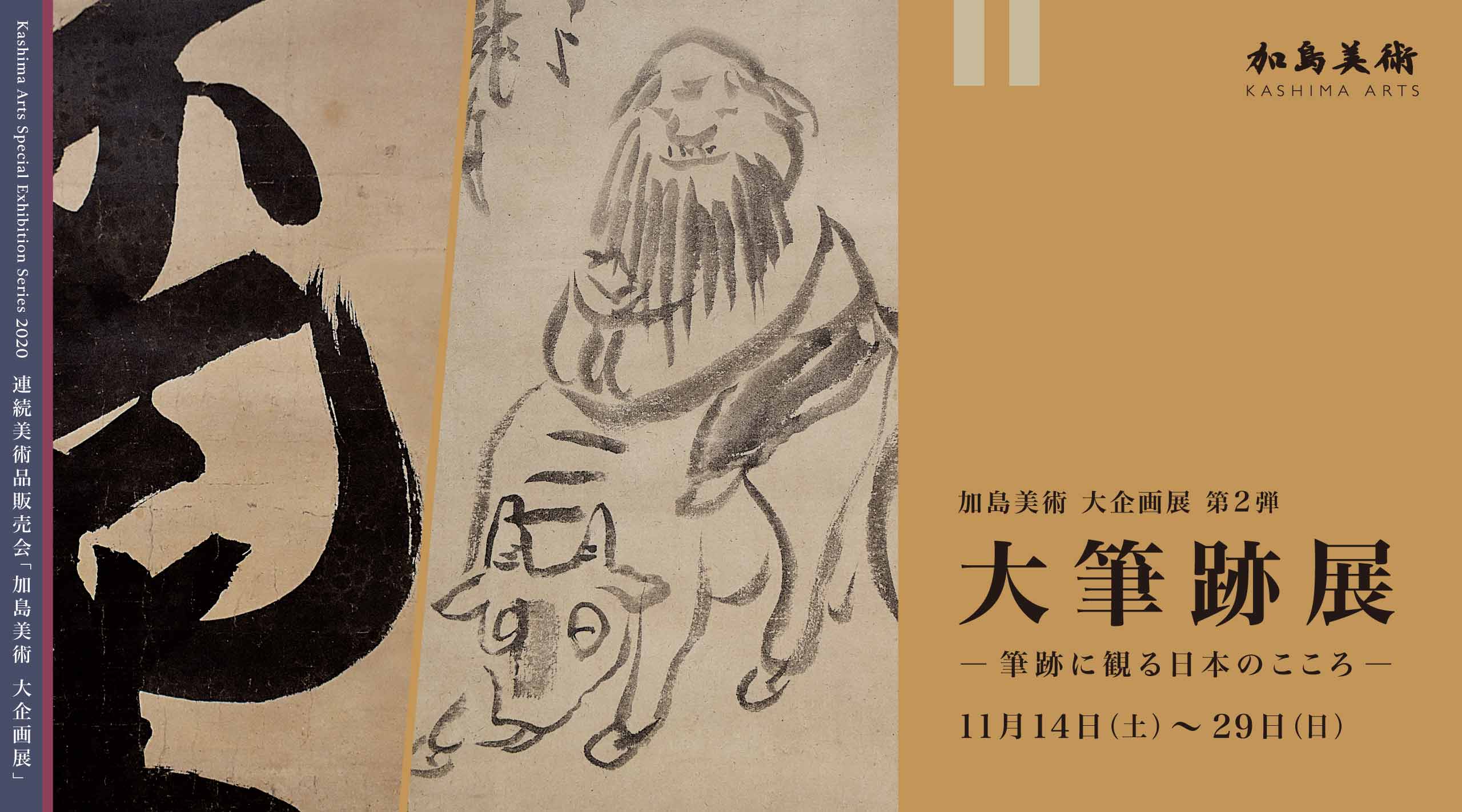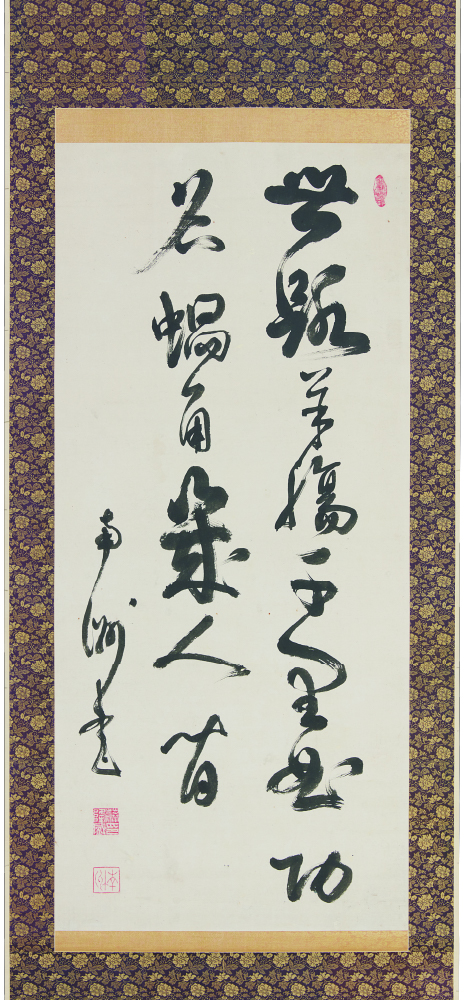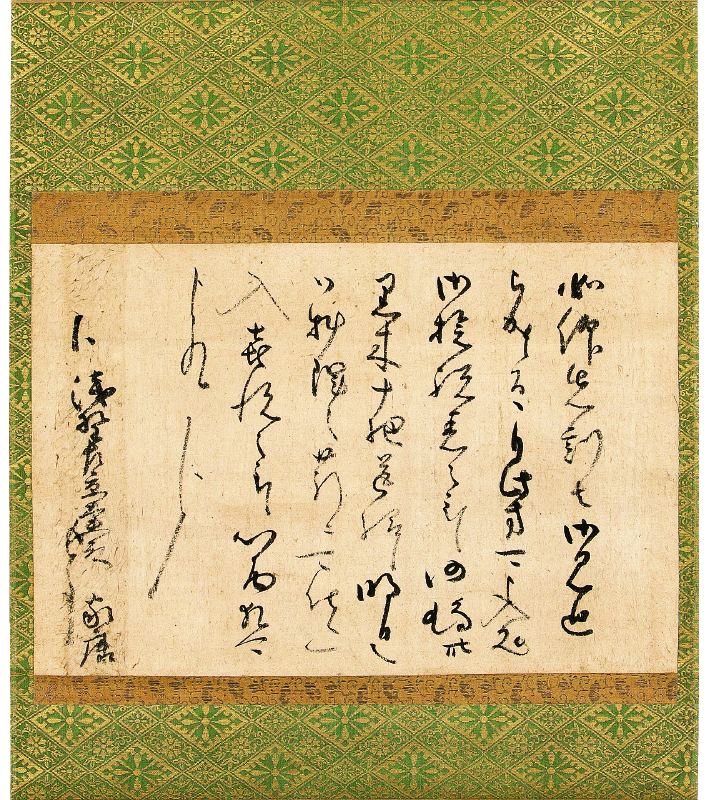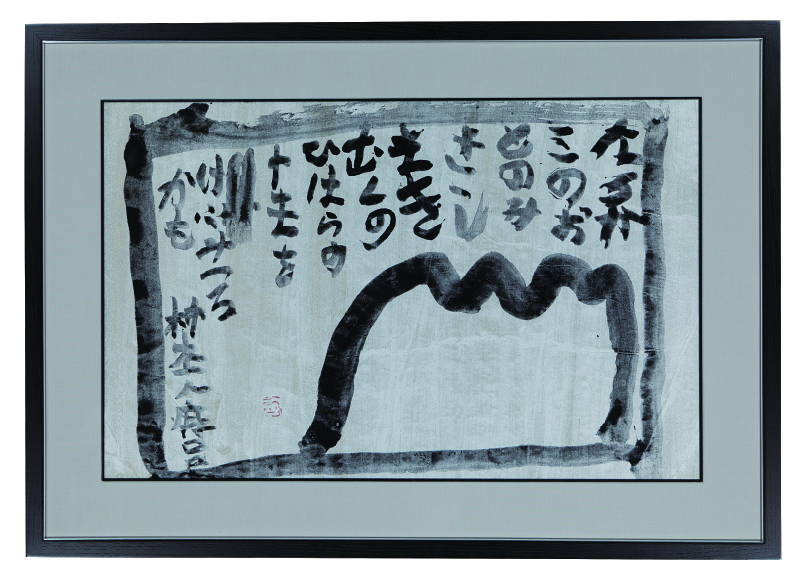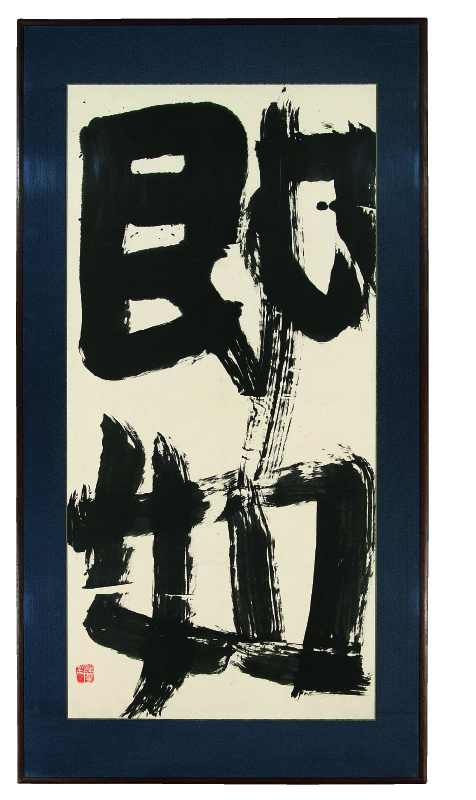"Calligraphy: An Examination of the Japanese Spirit" has ended
Thank you very much to all who came to visit.
Inquiries about exhibited works are welcome even after the exhibition, so please feel free to contact us.
Even if your desired work is unavailable, we will do our best to cater to your needs and help you find your perfect piece.
To see all works
For those who are still waiting for this exhibition’s catalog, click here➞ See all works
*Posting period is finished.
For first time customers, please register here ➞ Registration Form
Kashima Arts’ Anthology of Japanese Art: Kashima Arts Special Exhibition Series
Kashima Arts has continually sook to reinvent the ways Japanese art has been presented, all the while aspiring to share the various joys and values art brings, when incorporated into daily life. Now more than ever, there is a need for inspiration. Cultivated from various philosophies and numerous generations of cultural and historical growth, traditional Japanese works of art have proven themselves to be everlasting in terms of formal aesthetics and enlightening in their preservation of ancient wisdom. With each exhibition focusing on an essential Japanese art genre, these exhibitions recall the richness of the times that are now rarely seen. Each edition focuses on a major category of Japanese art, from Modern Painting to Calligraphy and Japanese Old Painting, and is being held from Autumn to Winter of this year. As the second installment to the series, “Calligraphy: An Examination of the Japanese Spirit,” presents works from the antiquity to the present. The third and final installment, “Old Japanese Paintings: The Masters who Colored the Edo Period”, is scheduled this December.
A retrospective of the various Japanese art masters Kashima Arts has introduced over the years, this event represents one of the cornerstones of the gallery’s ever-changing history.
On “Calligraphy: An Examination of the Japanese Spirit”
While calligraphy has been present for many years, it has been shunned in recent times as “illegible” and “difficult” to read. Nevertheless, the charm of calligraphy is not in the act of reading and comprehension. Rather, the joy remains in the intimate feeling of the artist’s hand, heart and emotion. In this exhibition, Kashima Arts will offer calligraphy by great historians, writers, painters, and calligraphers. Categorized by each author’s background, this exhibition will introduce works in an accessible manner, with guidance on how to understand these works.
Exhibition Highlights
1. An Easy-to-Understand Categorization of Works
●Calligraphy of the Edo Period: Classic Beauty
For the cultured figure, the mastery of the four arts (the zither, the Japanese board game Go, calligraphy, and painting) was essential. The literati of the Edo period were highly enthusiastic calligraphers. The Edo period signifies a time of great cultural development. As the Japanese language began to adopt Chinese characters into its own Kanji, Kana (Japanese syllabary symbols) also began to flourish during the Asuka period. Even more, the calligraphy of the Edo period began to introduce works that were not only verbal records but works of refined tastes and aesthetics.
Exhibiting Artists: Ikeno Taiga, Uragami Gyokudo, Yosa Buson and more.
●The Calligraphy of Samurai and Patriots: Understanding the Spirit and Life of the Author through Calligraphy
This exhibition will offer calligraphy by the samurai and patriots who endured periods of great historical turmoil. Comparing each writer’s character to their calligraphic style and their biography to their writing content, this introduction will offer a fun chance for learning.
Exhibiting Artists: Tokugawa Ieyasu, Arai Hakuseki, Saigo Nanshu (Saigo Takamori) and more.
●Buddhist Calligraphy: The Power and Wit of Visually Appealing, Easily Comprehensible Calligraphy
Originating from translations of Indian sutras, Buddhist teachings have, even with the passing of time, remained the invariable essence of Japanese Buddhist calligraphy. The majority of such is of the Zen sect, and, with the intention of teachings the masses, the comprehensibility of these works have amassed much praise and recognition. Much of these works vary from those that bear ineffable strength, to eccentric works with cute and peculiar aesthetics. With great visual appeal, these works materialize the various teachings and wisdom of Zen Buddhism.
Exhibiting Artists: Ikkyu Sojun, Taigu Ryokan, Hakuin Ekaku and more.
●Calligraphy by Painters: Life-Long Ambitions Deemed as a Hobbies
Like the literati of the Edo period, painters of the past and the present continue to uphold the tradition of calligraphy with much respect and esteem. While these works are by no means elegant, the strength and intensity of each calligraphic work evidences a fundamental aspect to these artist’s paintings. The calligraphy and its content, which seem to substantiate the painter’s life, imply a deeper meaning to that which the words themselves express.
Exhibiting Artists: Munakata Shiko, Suda Kokuta, Takehisa Yumeji and more.
●Calligraphy by Calligraphers: Calligraphy as an Artform
Calligraphers begin their learning with the mastery of classic styles crafted and refined by predecessors. Said to reveal the personality of the writer, these styles hold significant symbolic value. Through these foundations, a newly established style termed Avant-Garde Calligraphy formed. Coined “bokusho”, the pioneering aesthetic focused on the treatment of form, line, ink and blank space. Transcending the linguistic content of the work, the sheer craft and technique of these works gives them a unique artistic character.
Exhibiting Artists: Teshima Yukei and Inoue Yuichi.
●Calligraphy by Literati: Reencountering Great Writers
While literature by major historical writers are widely read, the writer’s hand is rarely directly experienced, both, through their hand or in person. The thoughts and feelings they held and the emotions they felt in the chaos of their times; these sentiments they held reflect not only in their literature but also in their calligraphy. Raw and immediate, calligraphy presents a fresh and intimate insight to the writer that diverges from their literary work.
Exhibiting Artists: Natsume Soseki, Saito Mokichi and more.
Additional works include old calligraphy by the likes of Fujiwara Sadaie and more.
2. View Works Safely at Home
As the COVID-19 pandemic continues, the practice of social distancing has been a justified and valuable precaution. In light of this, Kashima Arts will offer catalogues of exhibited works and images of their installation. In addition, computer, tablet and smartphone accessible, online catalogues will be on offer. To request for a free physical or digital catalogue, please contact Kashima Arts. Prices are specified in the catalogue and purchase and condition report inquired are welcomed over email, phone or fax.
3. A Rare Chance to Experience Works Up Close
Unlike museum displays, works will be exhibited without display casing. Able to experience the minute details and subtle character of each works, this will be an opportunity to view calligraphy in an intimate setting.
Highlight Works
Event Summary
Kashima Arts Special Exhibition Series: 2nd Edition, “Calligraphy: An Examination of the Japanese Spirit”
- Schedule
From the 14th (Saturday) to the 29th of November (Sunday)
Open daily during exhibition from 10am to 6pm / Free entry
- Exhibiting Works
Approx 55 pieces
- Exhibiting Artists
Ikkyu Sojun, Hakuin Ekaku, Taigu Ryokan, Ikeno Taiga, Inoue Yuichi and more.
- Venue
Kashima Arts
3-3-2 Kyobashi Chuo-ku, Tokyo
TEL +81 (0)3-3276-0700
FAX +81 (0)3-3276-0701
E-mail intl@kashima-arts.co.jp2 min walk from Tokyo Metro Ginza line, Kyobashi Station, exit 3
3 min walk from Tokyo Metro Yurakucho line, Ginza Ichome station, exit 7
5 min walk from Toei Asakusa line, Takaracho Station, exit A4
9 min walk from JR Tokyo station, Yaesu South exit
